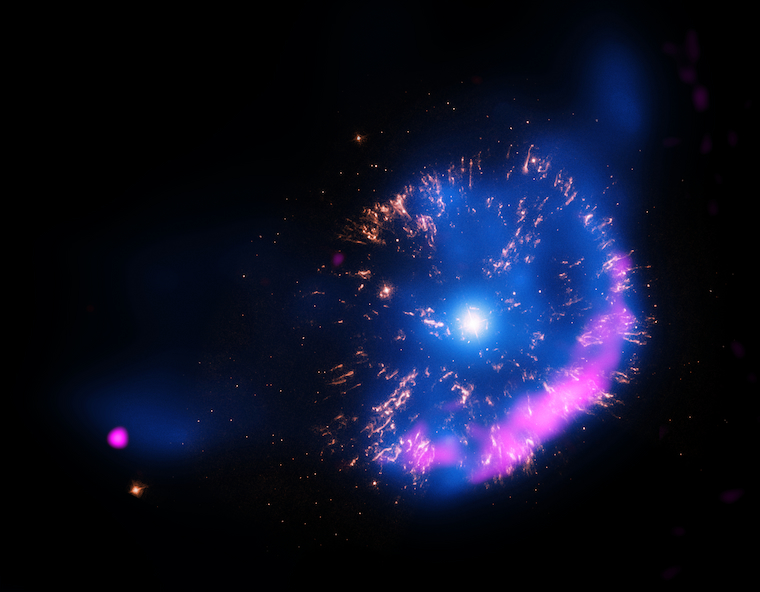GK Persei

GK Persei is a cataclysmic variable star (CSV) characterised by periodic explosions (novae) leading to a dramatic brightening of the star followed by a period of relative dimming. Despite its name indicating a single star, cataclysmic variable stars actually typically comprise of a white dwarf (which is a remnant of a non-massive star, like our sun) in a tight orbit with another star. The secondary star is gravitationally distorted by the white dwarf and transfers material to it forming an accretion disc, which is bright in the X-Ray and UV spectrum, much like the accretion disk around a black hole. The accreting material eventually falls onto the white dwarf and forms an ocean on its surface until the increasing temperature and pressure at the bottom layer causes as runaway fusion reaction to fuse the hydrogen into helium and expel the outer layer in a brilliant explosion. Eventually mass transfer and accretion begins again and starts the process all over again.
In cases where the rate of mass transfer is high, enough mass might accumulate on the white dwarf that it’s over the Chandrasekhar Limit (~1.44 M☉) and the electron degeneracy pressure is overcome, leading to runaway carbon fusion, potentially unbinding the whole the star. This is called a type Ia supernova which are several magnitudes brighter than regular classical novae. Type Ia supernovas are typically around 5 x 109 L☉ 1, while classical novas are merely 105 L☉ 2.
Coming back to GK Persei, it was first discovered by a Scottish clergyman named Thomas David Anderson in 1901. The nova dimmed gradually and after a series of fluctuations, finally came back to its initial luminosity after eleven long years. Till about 1980, GK Persei displayed infrequent outburts of up to 2 to 3 visual magnitude, thus being classified as a classical nova. However since 1980, it started exhibiting regular outbursts, occuring every three years and lasting about two months thus earning the classification of a dwarf-nova.